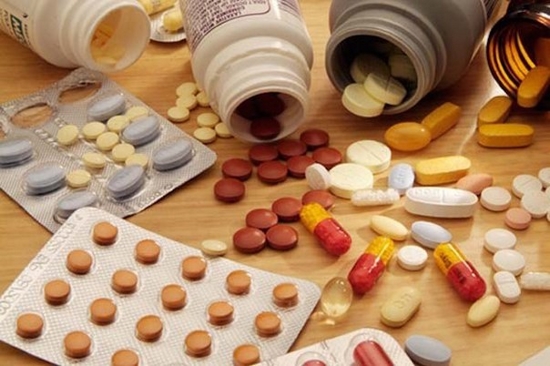Medicines that are used only in the CIS

In the CIS and in the West a very different approach to medicine, and our tourists, going to Europe or the US, discover a lot of new things. For example, the fact that tablets and medicines, which for years "save" us from a whole bouquet of various diseases, in these countries are either not sold, or are not known at all. Let's go through the most common.
1. Citramon
In the composition that was in Soviet times, is no longer produced, but tablets with this name and now you can buy in Russian pharmacies. The combination of aspirin, paracetamol and caffeine as a remedy for headaches in different countries is called differently: in the US, for example, an exsedrine. In Europe, sold a number of drugs with this composition.
At the same time, clients are warned: the pills are practically harmless if taken only occasionally and if the body is not dehydrated. But a frequent intake in combination with other products containing paracetamol and aspirin, as well as with alcohol can cause damage to the liver and kidneys.
2. Analgin
The drug is widely known and sold not only in Russia, but also in Eastern Europe. In the world, however, metamizole sodium is produced under the brands of novalgin, baralgin, optalgin and. Etc.
In developed countries, this analgesic will be sold to you strictly by prescription, or you will not find it at pharmacies, because it causes the risk of toxic reactions in the body and dangerous immune system disorders.
3. Validol, Corvalolum
Validol (a solution of menthol in the menthol ester of isovaleric acid), which the Russians "treat" and the heart, and nerves, and nausea, are sometimes used abroad ... as an aromatic food supplement.
We, by the way, wanted to remove it from the list of medicines as an obsolete drug with unproven efficacy, but in the end changed our minds, apparently, having decided that it is better not to take away the favorite "soothing" from the people.
As for another "heart remedy" Corvalolum, in the West it is not on sale and, for example, in the USA its import is forbidden. Phenobarbital in its composition refers to psychotropic substances, whose turnover is limited.
4. Zelenka
Brilliant greens are used all over the world as a technical dye for wool and silk.
And only in Russia and some countries of Eastern Europe it is still considered a medicinal product and is widely used to "color" children (and sometimes adults) during chicken pox and other cases with skin rashes or lesions. In the West, for this, there are effective colorless preparations.
5. Valerian
You can hardly buy valerian tablets in an overseas pharmacy. Firstly, because their effectiveness is not scientifically proven, and secondly, because for each of the many violations that Russians are accustomed to drown out with valerian, in the West there are separate medical means.
Foreigners would simply be stunned to learn that insomnia, nervousness, headache, palpitations and digestive problems are treated with the same medicine.
6. Novo-Passit
"Means against anxiety and depression", beloved by thousands of women in the USSR and Czechoslovakia, is still in demand in our country today.
In the late 1980s, large-scale clinical trials were conducted in the Czechoslovak Socialist Republic, allegedly "proving its effectiveness as a therapeutic agent in various fields of medicine." But the rest of the world is not convinced, so abroad such a medicine is almost unknown.
7. Collections of herbs
They refer to non-traditional medicine, to which in the West they are mostly indifferent, unlike Russians or Chinese, who more trust in "grandmother's" recipes than doctors. In addition, we are closely associated with Orthodoxy: the most revered holy ascetics, like Seraphim of Sarov and Sergius of Radonezh, are known as monastery healers who have performed real miracles.
However, it can not be said that abroad the herbs are not in high esteem, they are simply used for daily maintenance of a healthy lifestyle, and not for periodic "treatment".
8. Mumiyo
And in Russia, the means known since ancient times are respected. For example, the mummy is a natural organo-mineral product, mentioned by Aristotle and Avicenna. In the USSR and the friendly India since the 1950s, scientific studies of this substance have been carried out.
And although there is still no clinical evidence of its beneficial effect on the human body, the mummy is still in demand in Russia, and in India it is part of the traditional Ayurvedic medicine system.
9. Banks
In Soviet times, it was often possible to observe the men, women and even children with rows of round traces on their backs, similar to burns, or bruises on the beaches.
It looked at times disgustingly, and the health benefits were and still are doubtful. Nevertheless, it is still one of the well-known traditional medicine to treat colds and relieve muscle spasms.
10. Mustards
Another tool, hated by Soviet children, safely disappeared from foreign pharmacies as early as the beginning of the 20th century, when less irritating methods appeared.


Comments
When commenting on, remember that the content and tone of your message can hurt the feelings of real people, show respect and tolerance to your interlocutors even if you do not share their opinion, your behavior in the conditions of freedom of expression and anonymity provided by the Internet, changes Not only virtual, but also the real world. All comments are hidden from the index, spam is controlled.